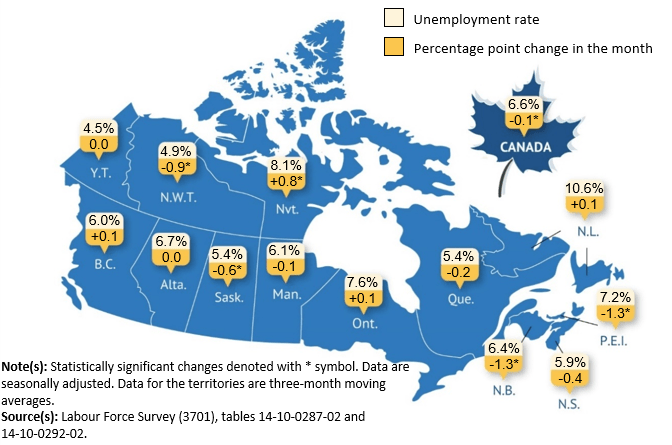Employers across Canada created 76,000 new jobs in January, nudging the national unemployment rate down to 6.6 percent, Statistics Canada said. This marks the third consecutive month of employment gains, following increases of 91,000 in December and 44,000 in November.
The new figures show employment rising in both full-time and part-time work over the three-month span, and the overall employment rate rose to 61.1 percent in January. Statistics Canada said youth aged 15 to 24 accounted for 31,000 of the new positions, while men and women in the core working age group of 25 to 54 saw combined gains of 64,000 jobs.
Gains were led by manufacturing, which added 33,000 positions, and by professional, scientific and technical services, which contributed 22,000 new roles. Construction, accommodation and food services, and transportation and warehousing also recorded increases. Employment rose in Ontario, British Columbia and New Brunswick, and was little changed in other provinces.
Average hourly wages increased 3.5 percent on a year-over-year basis, to $35.99. This was the slowest pace of growth since April 2022 and a further decrease from 4.0 percent growth in December. Statistics Canada noted that total hours worked climbed 0.9 percent in January and 2.2 percent year over year.
By demographic group, women and men in the core working ages saw their employment rates rise, while youth unemployment fell to 13.6 percent. However, the agency said unemployment remained higher among some racialized youth, including Black, South Asian and Chinese populations. For those aged 55 and older, men saw a slight decline in employment, while women’s levels were little changed.

In a trend that may interest human resources and executive leaders, the proportion of permanent employees who plan to leave their job in the next 12 months has declined from one year ago. Statistics Canada reported that 6.1 percent of permanent employees were thinking of leaving in January, down from 6.9 percent at the same time last year.
The report also provided a deeper look at the manufacturing sector, which accounts for 8.9 percent of total employment. Of the 1.9 million people employed in this area, 39.4 percent hold jobs that depend on U.S. demand for Canadian exports, including automotive manufacturing, where 68.3 percent of jobs rely on the U.S. market.
Still, union coverage in automotive manufacturing and other manufacturing subsectors has fallen over the years, the agency said. At the same time, many workers in these industries enjoy slightly higher-than-average hourly wages, which stood at $34.80 for private-sector employees in manufacturing, compared with $33.97 across all private industries.
Overall, the 76,000 net employment gain in January continues a trend of job growth that began in the final quarter of 2024, even as the unemployment rate had previously risen from historic lows. Statistics Canada said many unemployed people remain without work for extended periods, but recent job numbers may signal growing opportunities for some segments of the workforce.





